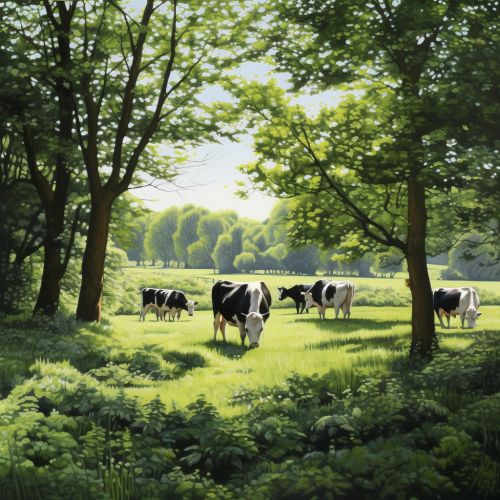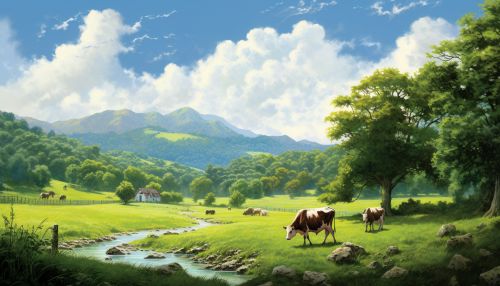Grazing
Introduction
Grazing is the act of consuming plant-based foods, but it is most commonly used to describe the eating habits of ruminant animals, such as cows and sheep. In a broader context, grazing is a type of feeding strategy that involves animals consuming relatively low quantities of food over extended periods. This article will delve into the intricacies of grazing, including its ecological implications, the physiology of grazing animals, and the impact of grazing on agricultural practices.
Ecological Implications of Grazing
Grazing plays a significant role in maintaining the health and diversity of grassland ecosystems. Grazing animals can influence the structure and composition of vegetation, which in turn affects the distribution and abundance of other species in the ecosystem. For instance, grazing can control the dominance of certain plant species, thereby allowing for greater plant diversity.


Grazing and Animal Physiology
The physiology of grazing animals, particularly ruminants, is uniquely adapted to their feeding strategy. Ruminants have a specialized stomach, known as a rumen, that allows them to efficiently break down plant materials through a process called fermentation. This process involves the breakdown of complex plant materials into simpler compounds that can be absorbed and utilized by the animal.
Grazing in Agriculture
In the context of agriculture, grazing is a key component of pasture-based livestock production systems. It provides a cost-effective method of feeding animals, as it reduces the need for supplemental feed. However, improper grazing management can lead to overgrazing, which can degrade pastures and reduce their productivity.
Conclusion
Grazing is a complex process that has significant implications for ecology, animal physiology, and agriculture. Understanding the intricacies of grazing can help in the management of grassland ecosystems and the improvement of pasture-based livestock production systems.
